EPLEY MANEUVER
Table of Contents
DEFINATION :
- The Epley maneuver or repositioning maneuver is a maneuver used by medical professionals to treat one common cause of vertigo, benign paroxysmal positional vertigo (BPPV)[needs update] of the posterior or anterior canals of the ear.It works by allowing free-floating particles from the affected semicircular canal to be relocated, using gravity, back into the utricle, where they can no longer stimulate the cupula,therefore relieving the patient of bothersome vertigo.This maneuver was developed by Dr.John Epley and first described in 1980.
INTRODUCTION :

- The Epley maneuver is a series of movements, normally carried out on a person by a doctor, to relieve the symptoms of BPPV. Research has found it to be an easy, safe, and effective treatment for the condition in both the long- and short-term.
- The Epley maneuver is sometimes called the particle repositioning maneuver or the canalith repositioning maneuver.
- These names are used because the maneuver involves a series of movements that help to reposition crystals in a person’s ear that may cause feelings of dizziness. Repositioning the crystals helps to relieve the person’s dizziness and nausea.
STEPS OF THE EPLEY MANEUVER CARRIED OUT BY A DOCTOR :
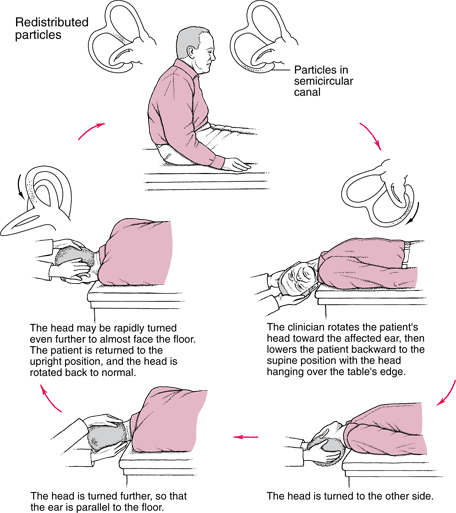
When a doctor carries out the Epley maneuver, they will perform the following steps:
- Ask the person to sit upright on an examination table, fully extending their legs out in front of them.
- Rotate the person’s head at a 45-degree angle towards the side they are experiencing the worst vertigo.
- Quickly push the person back, so that they are lying down with their shoulders touching the table. The person’s head is kept facing the side worst affected by vertigo but now at a 30-degree angle, so that it is lifted slightly off the table. The doctor holds the person in this position for between 30 seconds and 2 minutes, until their dizziness stops.
- Rotate the person’s head 90 degrees in the opposite direction, stopping when the opposite ear is 30 degrees away from the table. Again, the doctor holds the person in this position for between 30 seconds and 2 minutes, until their dizziness stops.
- Next, they roll the person in the same direction that they are facing, onto their side. The side that they experience the worst vertigo on will be facing upwards. The doctor holds the person in this position for between 30 seconds and 2 minutes, until their dizziness stops.
- Finally, the doctor brings the person back up to a sitting position.
- The whole process is repeated up to three times, until the person’s symptoms are relieved.
STEPS OF THE EPLEY MANEUVER CARRIED OUT AT HOME :
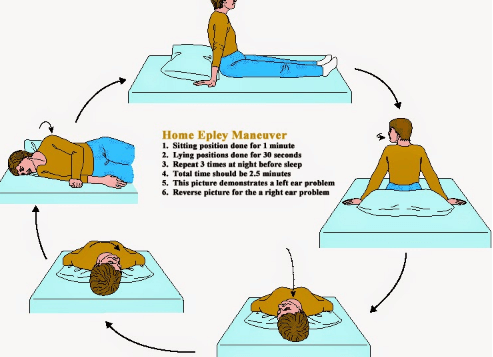
- It is best for a doctor to carry out the Epley maneuver if the person experiencing BPPV has not used this method before.
- Once a person has had the Epley maneuver performed by a doctor, they may want to repeat the process at home if they have further symptoms.
A person experiencing BPPV symptoms can follow these steps to gain relief at home:
- Sit up in bed with the legs extended in front of them and turn their head 45 degrees to the side that they are experiencing the most dizziness.
- Lie down, keeping their head turned to the side and lifted at a 30-degree angle away from the bed. They should stay in this position for 30 seconds to 2 minutes, until their dizziness stops.
- They should then turn their head 90 degrees in the other direction and stop when it is 30 degrees from the bed on the other side. Again, the person should hold this position for 30 seconds to 2 minutes, until their dizziness stops.
- They should now roll onto their side in the direction their head is facing, holding this position until the dizziness stops.
WHEN TO USE :
A doctor will use the Epley maneuver to help relieve a person’s dizziness and nausea when they have decided that BPPV is the cause.
The Epley maneuver is not suitable to treat vertigo caused by something other than BPPV. If a person is unsure what is causing their vertigo, they should speak to a doctor and ask to be examined.
Other causes of vertigo include:
- migraines
- ear infections
- anemia
- cerebellar stroke
- Having been shown the Epley maneuver by a doctor, someone with BPPV can repeat it themselves at home whenever they need to relieve their symptoms.
People often find it is useful to do the Epley maneuver before going to bed, as tossing and turning can trigger symptoms.
Related Other Article :

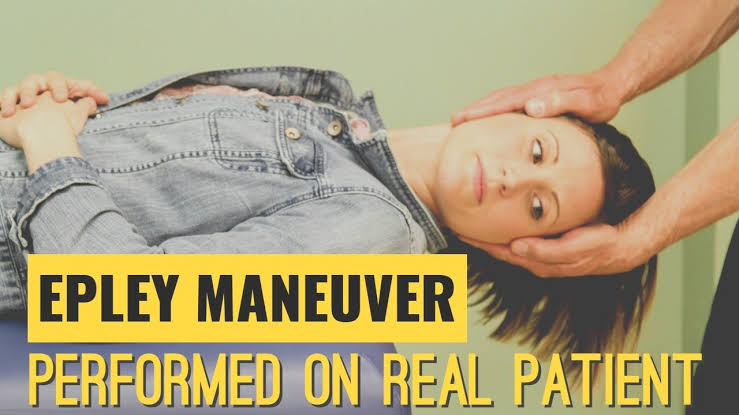

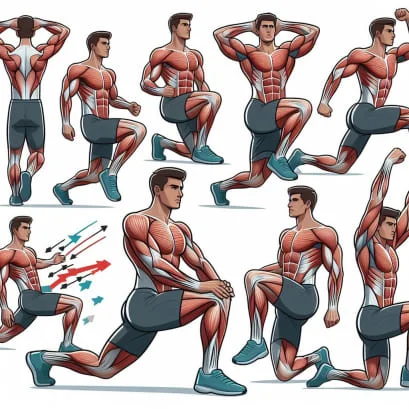
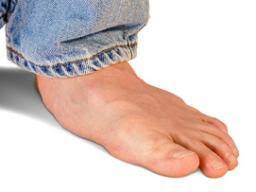


Epley Maneuver is Highly useful method for Vertigo, My Mother have Vertigo for Unknown reason and Physiotherapist teach her and within 3 days she recover completely.